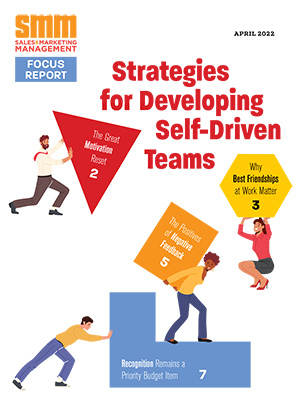 Did you think that hot new book that’s being hyped all over the Internet will reveal the secret to overcoming all of the selling challenges that you and your team may have? Take it from me. The chances are slim.
Did you think that hot new book that’s being hyped all over the Internet will reveal the secret to overcoming all of the selling challenges that you and your team may have? Take it from me. The chances are slim.
How do I know? I’ve received hundreds of unsolicited sales books
over the years. Authors send me their manuscripts for one of four reasons:
1. They want me to comment on an early draft with the intention of improving the book.
2. They want my endorsement on the cover.
3. They want me to promote a book or books they’ve already published.
4. They would like me to get to know them better through their work.
Do I read every book I’m sent? Of course not, but I do read enough of each to determine whether it’s worthwhile to invest more of my or my clients’ time.
It’s rare that I read something truly innovative; most rehash what has already been written, just with new terms and context.
The way I see it, sales books generally fall into the following categories:
“Here’s how I did it” — These explain how the author was successful selling.
In many cases, authors write these not to get rich on the number of copies they sell, but rather to increase their market exposure so they can raise their training/consulting/speaking fees — not that there is anything wrong with that. A relatively small percentage of these offer any real strategic value to the salesperson or sales manager.
“Here’s how our firm does it” — Written by principals of training companies, these books offer only a portion of their intellectual property because the authors want to keep some of the “secret sauce” from their competitors. Many are full of valuable information, but implementation would be a significant challenge without help, specifically from that author’s firm. I’m not saying this is unethical or misleading. It’s just a fact.
What you should do books — Authored by those who don’t currently sell or who have never sold, some of these are research-driven and, while they may be strong in offering guidance based on studies, surveys and thousands of interviews, they fall short in the more important area of “how you should do it.”
 The good news is that there are books on selling that provide real, substantive and actionable value, and they may even come from one of the categories above.
The good news is that there are books on selling that provide real, substantive and actionable value, and they may even come from one of the categories above.
To recognize that you are looking at one of these, seek out the following characteristics:
• The author has significant experience, insight and ability to articulate.
• He or she provides specific examples, including the “what” and the “how” of each point.
• The book uses current selling challenges as a context.
• Its message ties together an overall approach to selling that can make a sustainable difference in performance.
A good example is “Let’s Get Real or Let’s Not Play” by Mahan Khalsa and Randy Illig.*
 Sometimes these books take the form of workbooks or field books, such as “The Trusted Advisor Fieldbook” by Charles H. Green and Andrea Howe, and “The Business Battlecard” by Paul O’Dea (the best overall strategy book for small B2B businesses I have read).
Sometimes these books take the form of workbooks or field books, such as “The Trusted Advisor Fieldbook” by Charles H. Green and Andrea Howe, and “The Business Battlecard” by Paul O’Dea (the best overall strategy book for small B2B businesses I have read).
Others are more strategic and business value-oriented, such as Gregg Crawford’s* “The Last Link” and “Making the Number” by Greg Alexander, et. al. Still others redefine the word “practical,” such as Linda Richardson’s* “Perfect Selling” and Tom Searcy’s “RFPs Suck!”
For sales managers, there is “The Sales Manager’s Mentor” by Jeff Lehman.
 The idea that one hot new book will solve your selling challenges is enticing, but a top position on your favorite search engine or even on Amazon’s sales book list is not the best way to gauge its value to you. Take a closer look and you may find, as I have, that the best books are probably the ones you’ve never heard of.
The idea that one hot new book will solve your selling challenges is enticing, but a top position on your favorite search engine or even on Amazon’s sales book list is not the best way to gauge its value to you. Take a closer look and you may find, as I have, that the best books are probably the ones you’ve never heard of.
*These authors’ companies subscribe to ESR’s research.


